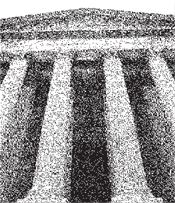“Extraordinary” Cannot Become Ordinary
Congress designed the Clean Air Act as a remedy to the serious and unchecked problem of air pollution. It intended the Act’s implementation to have major consequences. Like many environmental laws, the Clean Air Act’s central provisions for stationary source pollution directs the expert agency to study chronic and developing pollution problems—and curb them with the best pollution control systems. The law does not predetermine the best systems, leaving that to the agency’s career scientists and engineers. Congress equipped EPA with the authority to regularly review and revise standards to control and prevent pollution, protect public health, and safeguard welfare. No “mousehole,” the Act is (and was always understood and intended to be) one of Congress’s most ambitious and successful achievements. Despite West Virginia’s looming, ill-defined major questions doctrine, the public and EPA should not allow for the Act to be denigrated or weakened.
As Justice Scalia and others currently sitting on the Supreme Court have explained over the years, Congress knows that problems and solutions will evolve over time. It therefore intentionally drafts legislation and delegates authority to agencies using vague or general—not to be confused with ambiguous—language “to cover a multitude of situations that cannot practicably be spelled out in detail or even foreseen,” as Justice Scalia and Bryan Garner write in Reading Law. In these cases, courts have historically deferred to an agency’s reasonable application of the broad language Congress passed.
The Court took a stark turn from this consistent understanding in West Virginia, explaining that “in the extraordinary case,” general terms of a statute are insufficient to support a rule. Instead, the agency must point to clear authorization rather than mere “textual plausibility” to “regulate in that manner.” The case is excused from normal canons of textual analysis if the claimed authority is too “major,” according to a grab-bag of fuzzy and indeterminate factors. Yet many of these same Justices rejected that position in their dissent in Massachusetts v. EPA, maintaining that “[n]o matter how important the underlying policy issues at stake, this Court has no business substituting its own desired outcome for the reasoned judgment of the responsible agency.”
West Virginia seems to require a level of specificity in these extraordinary cases that simply does not exist in many statutes. Unlike in prior major questions cases like Gonzales v. Oregon, where Skidmore deference was applied instead of Chevron deference, or in King v. Burwell, where no deference to the agency was granted but the rule was upheld in accordance with the Court’s best reading of the statute, West Virginia demands specific authorization for a particular rule where the Court has deemed it major—or the rule fails.
The stakes are high, and no one knows where the edge of the cliff is. Honest litigants, agencies, and lower courts will be groping around in the dark for principled factors to divine whether a regulation is subject to the clear statement rule instead of normal statutory interpretation. Meanwhile, activists will be able to hide behind “the utter flabbiness of the Court’s criterion,” in the words of Justice Scalia, to reach their preferred outcome.
Consider, however, that the West Virginia majority repeatedly insisted that its major questions framework should apply only in “extraordinary” cases. And even its strongest defenders admitted that the Clean Power Plan raised novel and legitimate statutory questions—particularly in its reliance on credits obtained from zero-emitting generators that were not part of the regulated source category. But if this aspect of the rule was not authorized by statute, the Court should have said so, rather than invoking a highly abstract doctrine that seems to authorize what Adrian Vermeule has called the “extraordinary override of ordinary statutory meaning.” It remains to be seen whether the Court will adhere to its assurances that the doctrine is meant only for rare cases. Certainly, the Court’s characterizations of the Clean Power Plan provide room for distinguishing future rules that rely on less novel applications of the statute.
Surely the fact that a rule is highly consequential is not a basis for special judicial skepticism. The Clean Air Act was intended to do big things. It is, by design, going to result in consequential regulations involving many people, industries, and expenditures. It affects the health of everyone who breathes, and places the burden of cleaning up pollution on the industries everyone relies on. These factors do not make a rule extraordinary. Rather, they are the ordinary consequences of following congressional instruction. The question is simply whether the agency has stayed within the bounds of its authority. If it has not, the regulation is unlawful.
Is the agency acting in a way that is consistent with the statutory instructions from Congress? If so, the major consequences of regulation may just be what Congress intended.
Jay Duffy is an attorney with the Clean Air Task Force. He represented several public health and environmental non-profit organizations in West Virginia v. EPA and argued a portion of the case in the D.C. Circuit Court of Appeals.



